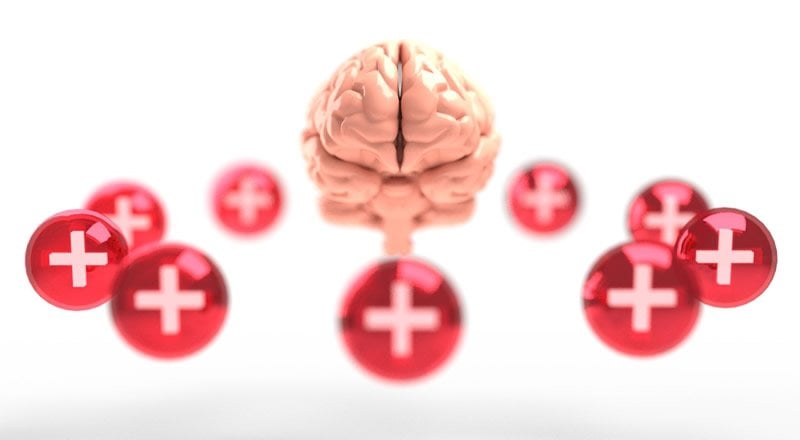Summary: Findings support the theory that impaired prefrontal control of the dopamine system is a key mechanism for the development of schizophrenia.
Source: Medical University of Vienna
Patients with schizophrenia have higher levels of dopamine and the typical symptoms of the disease have been linked to this. However, it is not only the elevated level of the neurotransmitter dopamine that triggers symptoms in patients but also poorer regulation of dopamine release by a certain area of the brain. For the first time, this has now been demonstrated by MedUni Vienna scientists.
The neurobiology of schizophrenia is not sufficiently understood. Recent findings from a study conducted at the MedUni Vienna provide new insight into the mechanisms of this disorder. The results of the study conducted at MedUni Vienna have recently been published in the journal Translational Psychiatry.
About 1% of the population suffers from schizophrenia. It is known that the dopamine system in patients with schizophrenia is hyper-sensitised and overreacts when stimulated, releasing large quantities of the neurotransmitter dopamine. This leads to the onset of typical schizophrenia symptoms, such as hearing voices or delusional and disorganised thinking. Antipsychotic medication that is used to treat patients with schizophrenia counteract these symptoms by dampening the transmission of the dopamine signal.
In a MedUni Vienna study, the dopamine system of healthy people has now been compared with that of patients with schizophrenia who had never received any antipsychotic treatment. In order to partially emulate alteration found in patients with schizophrenia, the dopamine system of healthy subjects was “sensitised” by repeated administration of a low dose of the dopamine-releasing drug amphetamine.
Prefrontal cortex regulates dopamine levels
The results of the study show that excessive dopamine release alone does not cause the typical symptoms of schizophrenia: No symptoms occurred in the group of healthy volunteers, despite sensitisation and the elevated dopamine release associated with it. The results of the study show that dopamine release is very well regulated by the prefrontal cortex (an area of the brain) in healthy volunteers, whereas this regulation is dysfunctional in patients with schizophrenia. “From this, we conclude that people affected by schizophrenia have difficulty regulating the release of dopamine via the prefrontal cortex. It is not so much about the quantity of dopamine released but more about a deficiency in the regulation processes by the prefrontal cortex,” explains lead author Ana Weidenauer from the Department of Psychiatry and Psychotherapy of MedUni Vienna/Vienna General Hospital.
The study was conducted using magnetic resonance imaging and positron emission tomography, the latter technique offering an insight into metabolic processes and changes in dopamine release in the presence of amphetamine.
It also showed that a larger volume of the language centre (Broca’s area) in the prefrontal cortex is associated with lower dopamine release in healthy volunteers. This relationship was not found in patients. “Our study provides detailed insights into the brain of untreated patients with schizophrenia,” explains principal investigator Matthäus Willeit from the Department of Psychiatry and Psychotherapy at MedUni Vienna/Vienna General Hospital. “The prefrontal cortex is a region of the brain where language, emotions and memory converge. This is an important starting point for therapeutic developments.”
About this neuroscience research article
Source:
Medical University of Vienna
Media Contacts:
Johannes Angerer – Medical University of Vienna
Image Source:
The image is in the public domain.
Original Research: Open access
“On the relationship of first-episode psychosis to the amphetamine-sensitized state: a dopamine D2/3 receptor agonist radioligand study”. Ana Weidenauer et al.
Translational Psychiatry doi:10.1038/s41398-019-0681-5.
Abstract
On the relationship of first-episode psychosis to the amphetamine-sensitized state: a dopamine D2/3 receptor agonist radioligand study
Schizophrenia is characterized by increased behavioral and neurochemical responses to dopamine-releasing drugs. This prompted the hypothesis of psychosis as a state of “endogenous” sensitization of the dopamine system although the exact basis of dopaminergic disturbances and the possible role of prefrontal cortical regulation have remained uncertain. To show that patients with first-episode psychosis release more dopamine upon amphetamine-stimulation than healthy volunteers, and to reveal for the first time that prospective sensitization induced by repeated amphetamine exposure increases dopamine-release in stimulant-naïve healthy volunteers to levels observed in patients, we collected data on amphetamine-induced dopamine release using the dopamine D2/3 receptor agonist radioligand [11C]-(+)-PHNO and positron emission tomography. Healthy volunteers (n = 28, 14 female) underwent a baseline and then a post-amphetamine scan before and after a mildly sensitizing regimen of repeated oral amphetamine. Unmedicated patients with first-episode psychosis (n = 21; 6 female) underwent a single pair of baseline and then post-amphetamine scans. Furthermore, T1 weighted magnetic resonance imaging of the prefrontal cortex was performed. Patients with first-episode psychosis showed larger release of dopamine compared to healthy volunteers. After sensitization of healthy volunteers their dopamine release was significantly amplified and no longer different from that seen in patients. Healthy volunteers showed a negative correlation between prefrontal cortical volume and dopamine release. There was no such relationship after sensitization or in patients. Our data in patients with untreated first-episode psychosis confirm the “endogenous sensitization” hypothesis and support the notion of impaired prefrontal control of the dopamine system in schizophrenia.
Feel Free To Share This Schizophrenia News.








